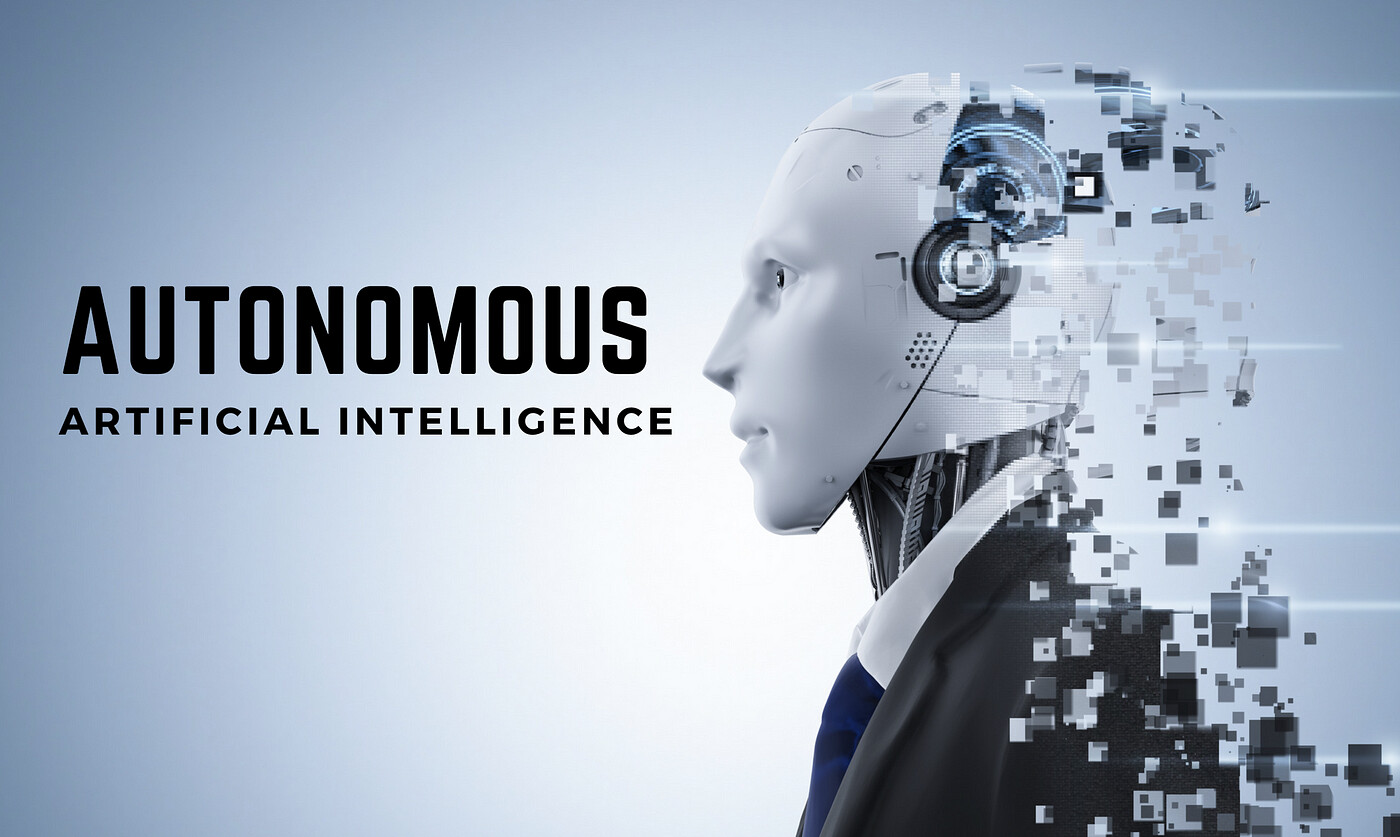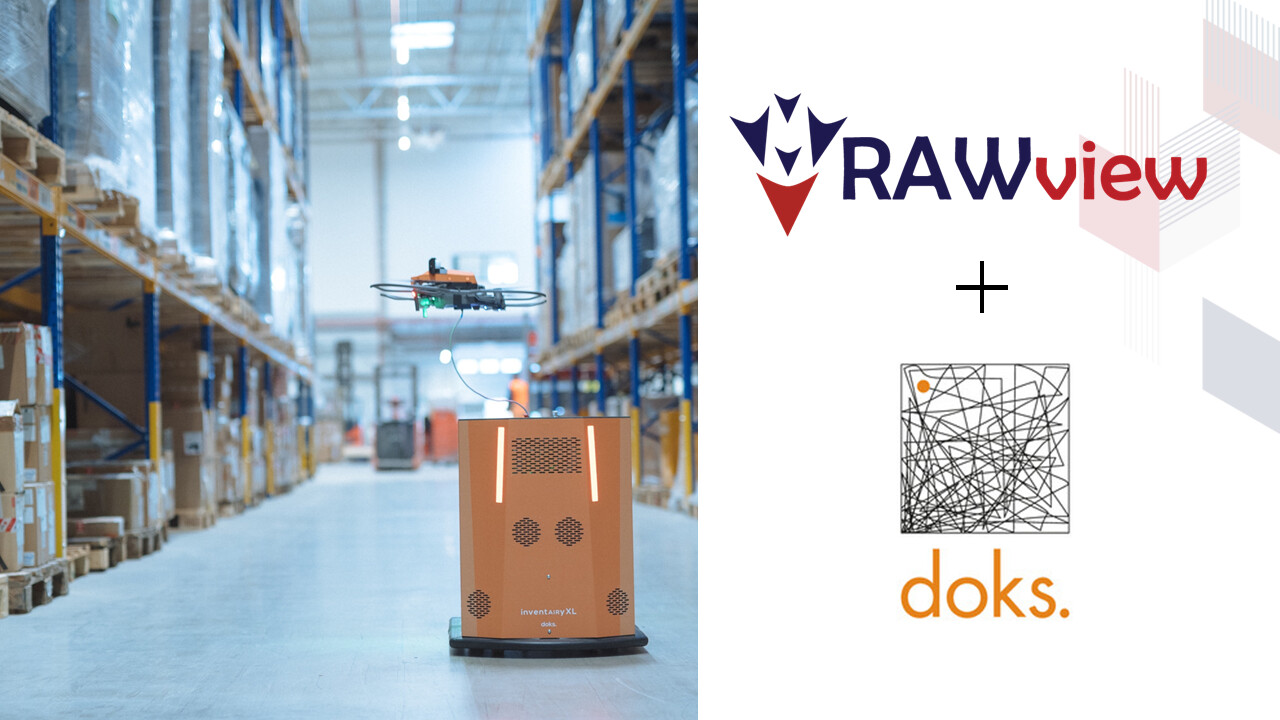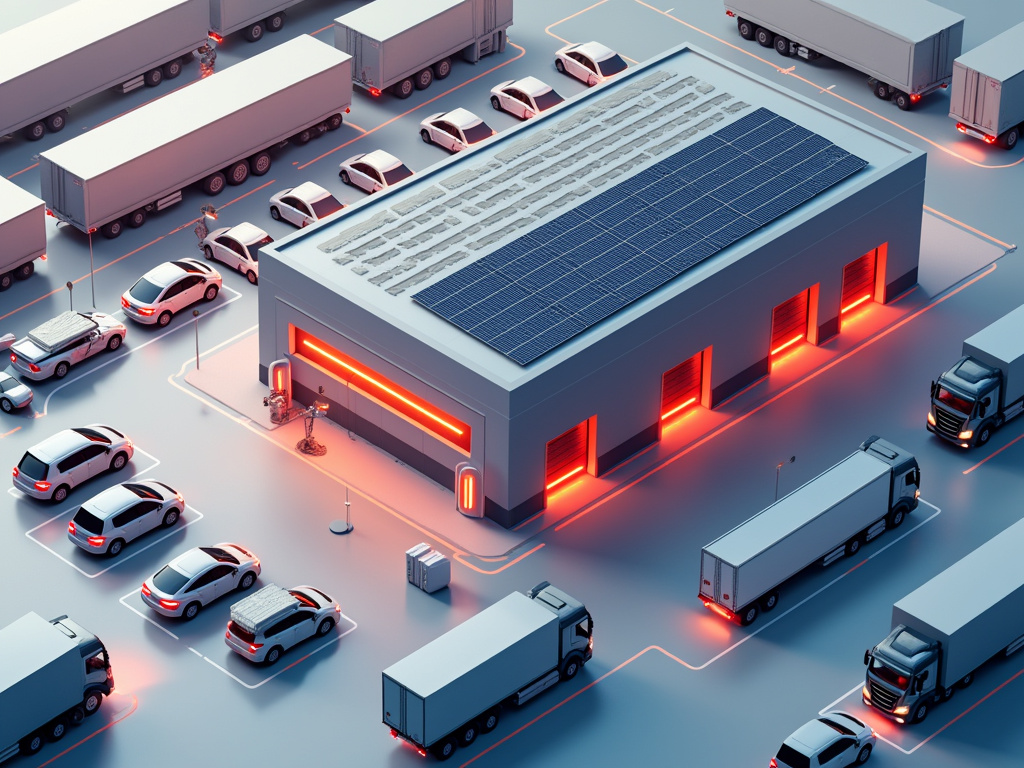Autonomous Agents in Logistics
Imagine supply chains operating with seamless precision, adapting instantly to disruptions, and optimizing operations in real-time. This reality is being brought to logistics today by autonomous agents. These AI-powered systems are dramatically enhancing efficiency, slashing costs, and elevating service quality to unprecedented levels.
Autonomous agents in logistics leverage advanced machine learning algorithms to automate complex tasks across the supply chain. From inventory management and demand forecasting to route optimization and warehouse operations, these intelligent systems are reshaping how goods move from manufacturer to consumer.
For developers and technical leaders in the logistics space, understanding the capabilities and implications of autonomous agents is crucial. These technologies offer immense potential to streamline operations, boost productivity, and gain a competitive edge in an increasingly digital marketplace.
This article explores the wide-ranging applications of autonomous AI agents in supply chain optimization. It examines the key benefits they bring, such as enhanced decision-making speed and increased operational efficiency. It also addresses the challenges of implementation, including integration complexities and data security concerns. By the end, you’ll have a comprehensive overview of how autonomous agents are transforming logistics and what it means for the future of the industry.
Key Benefits of Autonomous Agents in Logistics


Autonomous agents are reshaping the logistics landscape, offering powerful advantages that streamline operations and boost efficiency. These AI-powered systems are game-changers in supply chain management.
One of the most striking benefits is the lightning-fast decision-making capability. Autonomous agents process vast amounts of data in seconds, enabling real-time choices that would take humans hours or even days to make. Imagine a fleet of delivery trucks automatically rerouting based on sudden traffic changes or a warehouse instantly adjusting inventory levels to meet unexpected demand spikes.
The reduction in manual workload is another significant advantage. By automating routine tasks, these agents free up human workers to focus on more strategic, creative aspects of logistics management. Staff can now devote their time to improving customer relationships and innovating new service offerings.
Operational efficiency gets a major boost with autonomous agents at the helm. These systems optimize every aspect of the logistics process, from warehouse operations to last-mile delivery. They can predict maintenance needs before equipment fails, reducing costly downtime. In e-commerce, this level of efficiency can mean the difference between thriving and merely surviving.
Accuracy and responsiveness see remarkable improvements too. Autonomous agents don’t get tired, distracted, or make errors due to fatigue. They maintain a consistent level of precision 24/7, ensuring that orders are picked, packed, and shipped with minimal errors. When issues do arise, these systems can respond instantly, often resolving problems before they escalate.
The ability of autonomous agents to handle complex data processing tasks is truly impressive. They can analyze historical trends, current market conditions, and even weather forecasts to optimize logistics operations. This predictive capability allows companies to stay ahead of the curve, anticipating challenges and capitalizing on opportunities before their competitors.
Real-time decision making is one of the most valuable assets these agents bring. In a world where consumer expectations for rapid delivery are ever-increasing, the ability to make split-second adjustments can significantly enhance customer satisfaction. Whether it’s rerouting a package to meet a tight deadline or reallocating resources to handle a sudden influx of orders, autonomous agents keep the supply chain agile and responsive.
The efficiency gains from autonomous agents translate directly into cost savings and improved profitability. By optimizing routes, reducing waste, and maximizing resource utilization, companies can significantly lower their operational costs. This not only improves the bottom line but also allows businesses to offer more competitive pricing to their customers.
Looking to the future, the potential of autonomous agents in logistics seems boundless. From self-driving delivery vehicles to AI-powered demand forecasting, these systems are set to revolutionize every aspect of the supply chain. Companies that embrace this technology now will be well-positioned to lead the industry in the years to come.
Autonomous agents in logistics are not just improving our operations; they’re redefining what’s possible in supply chain management. The future is here, and it’s smarter, faster, and more efficient than ever before.
The benefits of autonomous agents in logistics are clear and compelling. Enhanced decision-making speed, reduced manual workload, increased operational efficiency, and improved accuracy and responsiveness are just the beginning. As these systems continue to evolve, they will undoubtedly play an increasingly central role in shaping the future of logistics and supply chain management.
Applications of Autonomous Agents in Logistics


A drone and unit enhance warehouse logistics efficiency. – Via logisticsbusiness.com
Autonomous agents are revolutionizing the logistics industry by automating critical processes and enhancing operational efficiency. These AI-powered systems are transforming key logistics functions, enabling companies to adapt swiftly to dynamic market conditions. Major applications of autonomous agents in logistics include:
- Inventory Management
- Route Optimization
- Demand Forecasting
- Supplier Relationship Management
Inventory Management
Autonomous agents are reshaping inventory management practices:
- Real-time stock monitoring prevents stockouts and overstock situations
- Automated reordering based on predefined thresholds ensures optimal inventory levels
- AI-driven analysis identifies slow-moving items and suggests redistribution
These innovations lead to reduced holding costs and improved cash flow for logistics companies.
Route Optimization
In transportation and delivery, autonomous agents excel at route optimization:
- Dynamic route planning considers real-time traffic, weather, and delivery priorities
- AI algorithms calculate the most fuel-efficient and time-saving routes
- Continuous route adjustments respond to unexpected delays or new orders
The result is faster deliveries, reduced fuel consumption, and increased customer satisfaction.
Demand Forecasting
Autonomous agents are transforming demand forecasting with their data-crunching capabilities:
- Analysis of historical sales data, market trends, and external factors for accurate predictions
- Real-time adjustments to forecasts based on emerging patterns
- Identification of seasonal trends and potential demand spikes
This enhanced forecasting allows for better resource allocation and inventory planning.
Supplier Relationship Management
In managing supplier relationships, autonomous agents offer significant advantages:
- Automated performance tracking of suppliers based on delivery times, quality, and pricing
- AI-driven negotiation systems for optimal pricing and terms
- Predictive analysis to identify potential supply chain disruptions
These capabilities foster stronger, more efficient partnerships with suppliers.
By automating these critical logistics functions, autonomous agents drive unprecedented levels of efficiency and accuracy in the industry. They enable logistics companies to respond rapidly to market fluctuations, reduce operational costs, and deliver superior service to their customers. As AI technology continues to evolve, we can expect even more innovative applications of autonomous agents in logistics, further transforming supply chain management.
Challenges and Considerations
While autonomous agents promise significant advancements in logistics, their implementation presents several challenges. Companies must navigate these hurdles to integrate these technologies effectively.
Integration Complexities
Merging autonomous systems with existing logistics infrastructure is complex. Many companies rely on legacy systems not designed for AI. A phased approach is recommended: start by piloting autonomous agents in limited areas to resolve integration issues before expanding their use across the organization.
Data Security Concerns
Autonomous agents require extensive data, posing security risks. Logistics companies handle sensitive customer information and proprietary shipping routes, increasing the attack surface for cybercriminals.
| Measure | Description |
|---|---|
| Data Classification | Automatically scan and classify sensitive data in repositories. |
| Strict Access Controls | Restrict access based on the Principle of Least Privilege and use multi-factor authentication. |
| Monitoring Privileged Account Access | Monitor all access to privileged accounts and set real-time alerts for suspicious activities. |
| Encrypting Sensitive Data | Encrypt data both at rest and in transit to prevent unauthorized access. |
| Security Awareness Training | Train employees on password hygiene, recognizing phishing attempts, and secure handling of data. |
| Network Segregation and Segmentation | Isolate critical networks from public access and divide networks into smaller sub-networks. |
| Cloud Security | Implement robust access controls, encrypt data, and review cloud security settings. |
| Application Security | Install updates/patches and secure web applications against vulnerabilities like SQL injection. |
| Patch Management | Regularly update and patch systems and applications to close security gaps. |
| Physical Security | Secure server rooms and workstations with locks, alarms, ID badges, and CCTV cameras. |
To address these concerns, invest in robust cybersecurity measures, including encryption, access controls, and regular security audits. Partner with cybersecurity experts specializing in protecting autonomous systems to safeguard your company’s and customers’ data.
High Upfront Investment
Cutting-edge technology is expensive. The costs of autonomous agents, including hardware, software, training, and maintenance, can be high. Smaller logistics companies may find the initial investment daunting. However, the long-term benefits, such as increased efficiency, reduced errors, and potential labor cost savings, can justify the expense. Explore financing options or government grants aimed at promoting innovation in logistics.
Staff Resistance to Technological Changes
Employees may fear that autonomous agents will make their jobs obsolete, leading to resistance. Effective communication and education are key. Be transparent about your plans and highlight how these technologies will augment human workers, not replace them. Invest in training programs to help staff adapt to new systems, turning potential opponents into allies.
Overcoming the Hurdles: A Strategic Approach
Implementing autonomous agents in logistics requires careful planning and adaptability. Consider these strategies: Develop a clear implementation roadmap with realistic timelines and milestones Prioritize projects offering the highest potential return on investment Build a cross-functional team to oversee the integration of autonomous agents Establish partnerships with technology providers who understand logistics challenges Create a culture of continuous learning and improvement within your organization By acknowledging these challenges and approaching them strategically, logistics companies can harness the power of autonomous agents while minimizing disruption. The journey may be challenging, but the destination—a more efficient, resilient, and innovative logistics industry—is well worth it.
The future belongs to those who prepare for it today. – Malcolm X
Case Studies: Successful Deployments of Autonomous Agents
Autonomous agents are transforming logistics operations across the supply chain. Here are some real-world examples of how these technologies are boosting efficiency, cutting costs, and enhancing service.
JD Logistics: Robotic Warehouse Automation
Chinese e-commerce giant JD.com has seen remarkable results from deploying autonomous robots in its warehouses:
- 240% increase in vertical storage capacity
- 42% improvement in daily order fulfillment
- 175% higher throughput during peak periods
By integrating Autonomous Case-handling Robots (ACRs), JD Logistics transformed its California distribution center. The robots intelligently retrieve totes and cartons, bringing them to human pickers. This human-robot collaboration has reduced training time from two weeks to just two days.
Employees previously walking 10+ miles a day now pick in ergonomic, operator-friendly workstations.
Case study report on JD Logistics’ implementation
| Metric | Value |
|---|---|
| Vertical Storage Capacity Increase | 240% |
| Improvement in Daily Order Fulfillment | 42% |
| Higher Throughput During Peak Periods | 175% |
Starship Technologies: Autonomous Last-Mile Delivery
Starship’s autonomous delivery robots are reshaping last-mile logistics in urban areas:
- Over 4 million commercial deliveries completed
- Operating in 20+ countries across hundreds of cities
- Typical delivery time of 30 minutes or less
These sidewalk robots navigate autonomously to customer doorsteps, providing contactless delivery of food, groceries, and packages. Starship’s solution has proven especially valuable during the pandemic, offering a safe, efficient delivery option.
Amazon Scout: Scaling Autonomous Delivery
Amazon’s Scout autonomous delivery vehicles are expanding last-mile capabilities:
- Currently operating in 4 U.S. states
- All-electric vehicles reduce carbon emissions
- Navigates urban and suburban environments
Scout robots autonomously deliver packages to Amazon customers’ homes, complementing the company’s existing delivery network. This technology allows Amazon to meet growing delivery demands while improving sustainability.
Key Takeaways
These case studies highlight several common benefits of autonomous agents in logistics:
- Significantly increased operational efficiency and throughput
- Reduced labor costs and improved working conditions
- Enhanced flexibility to meet fluctuating demand
- Improved sustainability through electrification and optimization
As autonomous technologies continue to mature, we can expect to see even more transformative applications across the logistics industry. The future of supply chain management is increasingly automated, efficient, and customer-centric.
Leveraging SmythOS for Autonomous Logistics
Agility and resilience are paramount in the complex supply chain landscape. SmythOS emerges as a game-changer, offering a robust platform for crafting and deploying AI-powered agents specifically designed for logistics operations. What sets SmythOS apart in the crowded field of supply chain technologies?
SmythOS boasts an intuitive visual builder that simplifies the creation of sophisticated AI workflows. Imagine designing intricate logistics processes with the ease of dragging and dropping components—that’s the power SmythOS puts at your fingertips. This user-friendly approach democratizes AI implementation, allowing non-technical team members to optimize supply chain operations.
Integration capabilities form another cornerstone of SmythOS’s appeal. SmythOS seamlessly connects with existing logistics infrastructure, whether dealing with outdated warehouse management software or cutting-edge IoT devices. This ensures your AI agents communicate effectively across your entire network, creating a cohesive and intelligent supply chain ecosystem.
Real-time monitoring is where SmythOS truly shines in enhancing supply chain resilience. The platform’s built-in tools offer unprecedented visibility into logistics operations, providing actionable insights that enable swift, informed decision-making. It’s akin to having a team of expert analysts working around the clock, without the associated overhead costs.
How does this translate to practical benefits? Consider inventory management, a perennial challenge for logistics professionals. SmythOS’s AI agents can analyze consumption patterns, lead times, and market trends to maintain optimal stock levels. This precision reduces carrying costs and minimizes the risk of stockouts or overstock situations, resulting in a leaner, more responsive supply chain that adapts to market demands in real-time.
In transportation logistics, SmythOS’s autonomous agents optimize routing in real-time, factoring in variables like traffic patterns, weather conditions, and fuel efficiency. The result? Faster deliveries, lower transportation costs, and a reduced carbon footprint—a win for both your bottom line and sustainability goals.
As supply chains grow increasingly complex and face unprecedented challenges, SmythOS provides the foundation for building next-generation logistics solutions. By lowering the barriers to AI implementation and offering powerful tools for agent development, it democratizes access to advanced AI capabilities across the industry.
Supply chain disruptions can have cascading effects on global commerce. SmythOS stands as a beacon of innovation, driving efficiency and resilience in logistics operations. The future of supply chains is autonomous, intelligent, and full of possibilities—and with SmythOS, that future is within reach.
Conclusion: The Future of Autonomous Agents in Logistics


Futuristic logistics hub with autonomous vehicles and charging stations.
Autonomous agents are set to revolutionize logistics and supply chain management. These AI-powered systems will reshape how goods move, offering unprecedented efficiency, cost reduction, and service quality.
Technological advancements in artificial intelligence, machine learning, and robotics are creating sophisticated autonomous solutions. These are not just incremental improvements but represent a fundamental shift in logistics operations.
SmythOS exemplifies AI orchestration in logistics, democratizing access to advanced automation capabilities. Its intuitive interface and powerful integration features enable companies to harness autonomous systems without deep technical expertise.
The future of logistics lies in the collaboration between human ingenuity and AI efficiency. Autonomous agents will handle complex tasks like predictive analytics, route optimization, and adaptive inventory management, allowing human workers to focus on strategic planning and customer relationships.
In this new era, we can expect:
- Reduced operational costs
- Enhanced forecasting and inventory management accuracy
- Improved responsiveness to market changes
- Increased sustainability through optimized resource utilization
- Elevated customer satisfaction with faster, more reliable service
Logistics companies embracing this autonomous future will gain a competitive advantage. Those who hesitate may struggle to keep pace with AI-powered systems’ efficiency and capabilities.
The message is clear: the future of logistics is autonomous and intelligent. Now is the time to explore how platforms like SmythOS can propel your logistics operations into the future, ensuring you lead in innovation and efficiency.
Last updated:
Disclaimer: The information presented in this article is for general informational purposes only and is provided as is. While we strive to keep the content up-to-date and accurate, we make no representations or warranties of any kind, express or implied, about the completeness, accuracy, reliability, suitability, or availability of the information contained in this article.
Any reliance you place on such information is strictly at your own risk. We reserve the right to make additions, deletions, or modifications to the contents of this article at any time without prior notice.
In no event will we be liable for any loss or damage including without limitation, indirect or consequential loss or damage, or any loss or damage whatsoever arising from loss of data, profits, or any other loss not specified herein arising out of, or in connection with, the use of this article.
Despite our best efforts, this article may contain oversights, errors, or omissions. If you notice any inaccuracies or have concerns about the content, please report them through our content feedback form. Your input helps us maintain the quality and reliability of our information.
